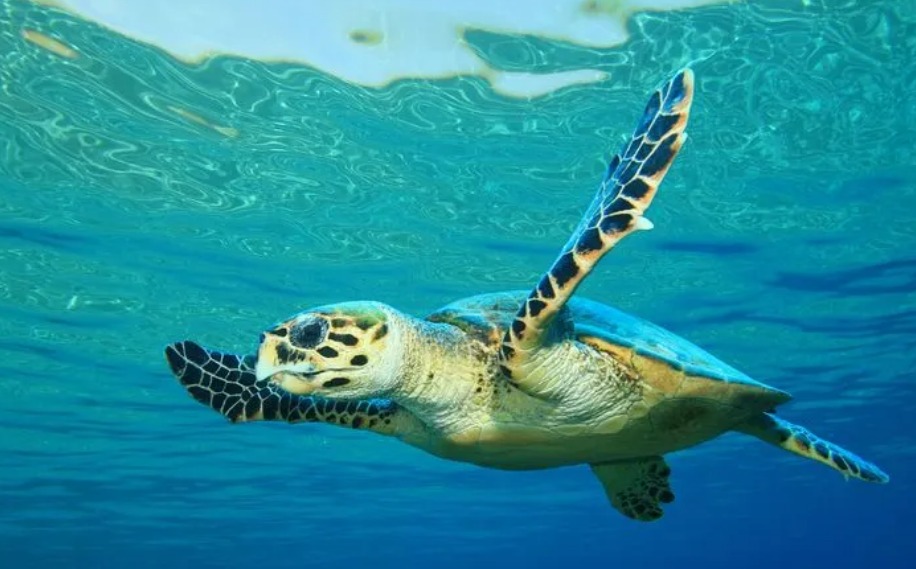The hawksbill turtle is found in all the world’s oceans, with subspecies in the Atlantic and Pacific. Although capable of large migrations, these sea turtles are primarily coral reef dwellers in the warm, shallow waters of the tropics. Named after the scales on their shells, hawksbill turtles are crucial to the survival of reefs.
A sponge-eating creature
The hawksbill turtle’s diet consists of 95% sea sponges, the hard spines they contain do not seem to bother it. The only reptile to feed on this prey, it extracts sponges from the crevices of coral reefs which it tears with its sharp and pointed beak, which is reminiscent of that of birds.
A fine mouth
Instead of eating the first sponge that comes to the tropical waters of its habitat, this turtle is very selective, especially in the Caribbean. It avoids sponges that contain indigestible spongin fibers, although, according to Anne Meylan of the Department of Erpetology and Ichthyology at the American Museum of Natural History, it will readily eat sponges that are toxic to other species, because of the secondary components present in the sponges, but also because of the presence of blue-green algae which live in symbiosis with the sponges.
Do not eat !
As the sponges’ toxic chemicals enter the sea turtles’ bodies, they are an effective deterrent against predators. If a human ate a turtle, he would get sick, and could even die. Here is a diet that significantly beats out the competition.

Hawksbill turtles look for sponges, anemones and sea urchins that cling among the corals, as well as other creatures like jellyfish and squid. -Andriy Nekrasov/Shutterstock
Did you like this article? Find the magazine “Le Monde des Animaux” on newsstands and on monmag.fr (paper and digital versions, and subscriptions).
The World of Animals & Nature is a magazine dedicated to wild fauna and flora from around the world. Through captivating stories and sublime photographs, the magazine offers a true visual safari in the heart of nature.




